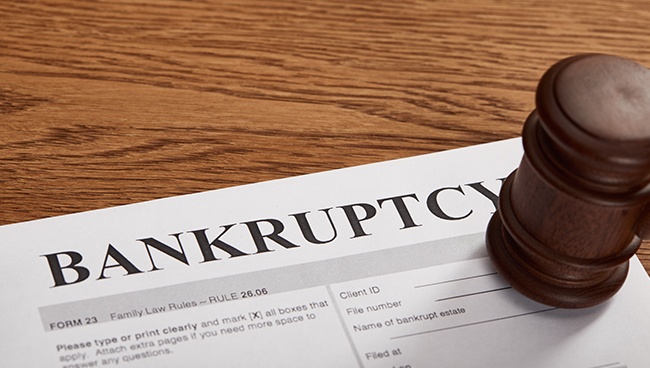On This Page
Do you have too much debt and nowhere to turn? If so, filing for bankruptcy in Canada might be your best bet, but you’ll need to consider some important things before taking this step. Here are five facts about filing for bankruptcy in Canada that can help you determine if it’s the right thing to do. Note that when we talk about filing for bankruptcy in Canada, we are referring to a Consumer Proposal or Bankruptcy, which would require the assistance of a Licensed Insolvency Trustee.
If you’re considering filing for bankruptcy in Canada, here are 5 things that you should know before you get started.
What Is the Difference Between a Bankruptcy Lawyer and a Licensed Insolvency Trustee?
In Canada, a bankruptcy lawyer is referred to as a Licensed Insolvency Trustee. The terms “bankruptcy lawyer”, “bankruptcy trustee”, and “Licensed Insolvency Trustee” are generally interchangeable – but the correct term in Canada is a Licensed Insolvency Trustee (LIT). An LIT can help you get organized by asking questions such as how much debt you have and how long it will take to repay it. An LIT can also help you gather documents like your loan agreements and tax returns so that he or she can identify what assets you have that could be converted into cash and which creditors need to be paid off first. Once all of these details are gathered, your licensed insolvency trustee will help you draft a proposal (or plan) that outlines all of your debts, assets, income sources and expenses. If a debtor files alone without consulting a licensed insolvency trustee, he or she risks making mistakes when filling out paperwork and gathering necessary information needed for financial calculations. A bankruptcy lawyer (ie; Licensed Insolvency Trustee, in Canada) takes care of these tedious tasks leaving you free to concentrate on your emotional health and improving your financial situation.

Why Do People File for Bankruptcy?
The most common reason for filing bankruptcy in Canada is that the individual has become insolvent. The first thing you should know when looking into bankruptcy in Canada is what exactly being insolvent means. Being deemed insolvent can be somewhat subjective; however, generally speaking, you are considered to be insolvent if your debts total more than what is owed on all of your assets. The fact is, it's actually quite common to become insolvent in Canada. According to research conducted by ValueInsured, 1 in 6 Canadian households are one major illness away from financial hardship and 40% of Canadians live paycheque to paycheque. Basically, you're not alone if you find yourself in a precarious financial situation. While becoming insolvent may seem like a daunting thing at first, it may just mean that now is your chance to make some changes and secure your finances for years to come. If you're thinking about filing for bankruptcy in Canada, you should reach out to a Licensed Insolvency Trustee as a first step. Most LITs offer a free consultation, so you can get the advice and support you need without paying anything up front.
Who Can File for Bankruptcy?
Almost anyone can file for bankruptcy in Canada, but it's not necessarily something you should do without thinking it through carefully. Generally speaking, bankruptcy filings are allowed only if you're a person or a company and have excessive debt. That's because courts don't look kindly on people who file bankruptcy to escape paying what they owe. For companies, bankruptcy is most common among small businesses (newspapers tend to cover these stories). As such, keep in mind that what we're talking about here is personal or corporate bankruptcy—not business bankruptcies like those filed by General Motors Co., Valassis Communications Inc., Circuit City Stores Inc., Sharper Image Corp., etc. Those are big business bankruptcies that involve massive losses of capital. They're serious matters and beyond the scope of your basic guide on how to file for bankruptcy in Canada.
What are the Alternatives to Filing Bankruptcy?
The best alternative to filing bankruptcy is to avoid bankruptcy altogether. This means spending less than you make, paying down debt regularly, and putting together a savings plan. Most people file for bankruptcy because they simply can’t afford to pay their bills or keep up with their financial obligations. But what about those people who could potentially repay some or all of their debt over time? If you fall into that category, the best alternative to filing for bankruptcy is a consumer proposal. A consumer proposal will allow you to restructure your debts under the protection of the law while giving you time to get back on your feet. It also allows you to remain self-employed and retain assets such as a family home and vehicle. Once a consumer proposal is approved by creditors, your personal liability ends—but remember, it’s very important to stick with the terms of the plan.
A consumer proposal is similar to bankruptcy because it will also erase your debts under a court-approved plan. However, unlike bankruptcy, you can still retain certain assets and remain self-employed. To create a plan, you’ll need to find an accredited bankruptcy trustee. In Canada, these professionals are called Licensed Insolvency Trustees (LITs).
Debt Consolidation
Debt consolidation is when you pay off all your debts using a single lump sum. For example, if you have $10,000 worth of credit card debt but only $2,000 in savings, that means you have $8,000 of additional debt (the difference between what you owe and what you have saved). By taking out a debt consolidation loan, or borrowing money from a friend or family member on top of your savings deposit, it should be possible to pay off all your credit cards and free yourself from any long-term monthly payments. In other words: consolidating your debt helps turn short-term liabilities into long-term assets—at least as far as managing your personal finances is concerned. One thing to keep in mind is that by consolidating your debt and applying one larger payment toward paying off multiple smaller ones, you'll also be getting rid of any interest rates you were previously paying. That's because every dollar gets applied to principal instead of making new compound interest calculations every month.
Consumer Proposal
A consumer proposal is a formal offer from a consumer (you) to your creditors (people you owe money). This process is regulated by provincial and federal governments and only a licensed insolvency trustee can file one on your behalf. The process is known as filing bankruptcy when you are an individual but filing a consumer proposal is sometimes called making a voluntary arrangement with creditors. In Canada, those who file bankruptcy go through what’s called personal bankruptcy while those who have filed or will be filing a consumer proposal are referred to as debtors. Both personal bankruptcies and proposals involve dealing with all of your unsecured debts, which don’t include mortgages, government loans or lines of credit secured by property.
A consumer proposal can forgive a large portion of debt and consolidate debts. A consumer proposal can be much better than bankruptcy because you don’t have to make as many payments to your creditors. Instead, you pay one amount every month until your debts are paid off.
How to Find a Licensed Insolvency Trustee
In order to file bankruptcy in Canada, you must use a Licensed Insolvency Trustee (LIT). LITs help manage and settle bankruptcies through mandated procedures, helping customers comply with legal requirements. While you can find a list of licensed insolvency trustees online, it’s always best practice to confirm their credentials before committing. It’s important to keep a clear distance between personal relationships and financial decisions when you’re considering bankruptcy options; using an impartial party is always recommended.
A great way to find a good Licensed Insolvency Trustee is to search “licensed insolvency trustee” online and find a reputable trustee near you. Make sure to read through reviews, and even the business' responses to those reviews to get a sense of how capable and helpful the trustee is. Then reach out to them and ask if they offer a free consultation. Most Licensed Insolvency Trustees, like Remolino And Associates, offer a free consultation to help you get started.
Another way to find a licensed trustee is to visit the government of Canada's official website which lists all licensed insolvency trustees. From there, you can choose a specific region and filter your results to see which trustees are accepting new clients. LITs operating across provincial borders will be listed separately so you can easily find one near you regardless of where you live.
The government of Canada's website also contains a lot of useful information related to filing bankruptcy or a consumer proposal. You can also learn more about what is required to become a licensed insolvency trustee in Canada, and what to look for in a trustee.
Additional Reading:
Brought to You By:
Remolino And Associates
1180 Danforth Ave, Toronto, ON M4J 1M3
(416) 792-5599






No responses yet